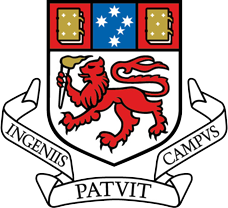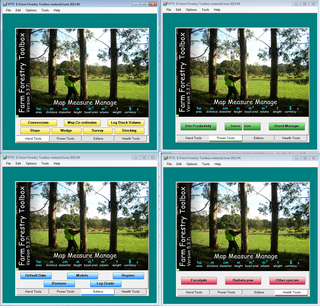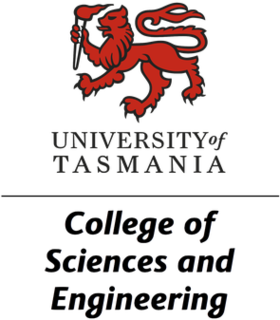
Hobart ( is the capital and most populous city of the Australian island state of Tasmania. Home to almost half of all Tasmanians, it is the least-populated Australian state capital city, and second-smallest if territories are taken into account, before Darwin, Northern Territory. Hobart is located in Tasmania's south-east on the estuary of the River Derwent, making it the most southern of Australia's capital cities. Its skyline is dominated by the 1,271-metre kunanyi/Mount Wellington, and its harbour forms the second-deepest natural port in the world, with much of the city's waterfront consisting of reclaimed land. The metropolitan area is often referred to as Greater Hobart, to differentiate it from the City of Hobart, one of the five local government areas that cover the city. It has a mild maritime climate.

The University of Akureyri was founded in 1987 in the town of Akureyri in the northeastern part of Iceland. It is today a school of health sciences, humanities and social science, and a school of business and science. Over 2000 students attended the university in the autumn semester of 2014, around half of them through flexible learning, making the university the largest provider of distance education in the country. The University of Akureyri coordinates with other Icelandic Universities to operate the University Centre of the Westfjords located in Ísafjörður, which operates two master's degrees, one in Coastal and Marine Management and the other in Marine Innovation. Additionally, The University of Akureyri coordinates with other Nordic Universities for the West Nordic Studies and Polar Law Masters programs.

The University of Tasmania (UTAS) is a public research university, primarily located in Tasmania, Australia. Founded in 1890, it is Australia's fourth oldest university. Christ College, one of the university's residential colleges, first proposed in 1840 in Lieutenant-Governor Sir John Franklin's Legislative Council, was modeled on the Oxford and Cambridge colleges, and was founded in 1846, making it the oldest tertiary institution in the country. The university is a sandstone university, a member of the international Association of Commonwealth Universities, and the Association of Southeast Asian Institutions of Higher Learning.

Sullivans Cove is on the River Derwent adjacent to the Hobart City Centre in Tasmania. It was the site of initial European settlement in the area, and the location of the earlier components of the Port of Hobart.

John Alexander Church is an expert on sea level and its changes. He was co-convening lead author for the chapter on Sea Level in the IPCC Third Assessment Report. He was also a co-convening lead author for the IPCC Fifth Assessment Report. He is a member of the Joint Scientific Committee of the WCRP. He was a project leader at CSIRO, until 2016. He is currently a professor with the University of New South Wales' Climate Change Research Centre.

The Scottish Association for Marine Science (SAMS) is one of Europe's leading marine science research organisations, one of the oldest oceanographic organisations in the world and is Scotland's largest and oldest independent marine science organisation.
The Marine Institute is a State agency in Ireland that provides government, public agencies and the maritime industry with a range of scientific, advisory and economic development services, aiming to inform policy-making, regulation and the sustainable management and growth of the country’s marine resources. Founded in 1991 on foot of a 1974 report, the Institute undertakes, coordinates and promotes marine research and development, which is essential to achieving a sustainable ocean economy, protecting ecosystems and inspiring a shared understanding of the ocean. The agency is governed by a ministerially-appointed board and has a professional staff, a headquarters near Galway, an office in Dublin, and two research vessels.

The Hatfield Marine Science Center(HMSC) is a marine science research and education center next to Yaquina Bay of the Pacific Ocean in the U.S. state of Oregon. It is operated by Oregon State University in cooperation with five state and federal agencies co-located on site. Named after Mark Hatfield, a former U.S. Senator from Oregon, the HMSC occupies a 49-acre (20 ha) site in Newport.
The South Australian Research and Development Institute (SARDI) is the principal research institute of the Government of South Australia, with a network of research centres, laboratories and field sites both in metropolitan Adelaide and throughout South Australia. SARDI is part of Primary Industries and Regions SA.
The College of Arts, Law and Education was founded in 2017 as a college of the University of Tasmania that incorporated the School of Humanities, the School of Social Sciences, the School of Creative Arts and the Faculties of Law and Education. The College offers undergraduate, postgraduate and research programs.

The Farm Forestry Toolbox is a collection of computer programs, referred to as 'Tools', intended to be used by farm forest owners and managers to aid decision making. The Toolbox includes a set of simple 'Hand Tools'; conversion of measurements and map co-ordinates; measuring the volume of stacked logs, slope, basal area; and a survey tool. A second set of more complex tools or 'Power Tools'; can be used to estimate site productivity, volume and value of wood grown for individual trees, at the coupe or stand level and forest estate level.

Shirley Winifred Jeffrey was an Australian marine biologist and naturalist, who researched biochemical separation techniques, specialising in micro-algal research; her discovery, isolation and purification of chlorophyll c allowed for the evaluation of oceanic microscopic plant biomass and photosynthesis. She was christened The Mother of chlorophyll c by one of her early mentors, Professor Andy Benson of the Scripps Research Institute in San Diego.

CSIRO Oceans and Atmosphere (O&A) is one of the current 8 Business Units of the Commonwealth Scientific and Industrial Research Organisation (CSIRO), Australia's largest government-supported science research agency.

Trevor John McDougallFAGU is a physical oceanographer specialising in ocean mixing and the thermodynamics of seawater. He is Scientia Professor of Ocean Physics in the School of Mathematics and Statistics at the University of New South Wales, Sydney, Australia. He is President of the International Association for the Physical Sciences of the Oceans (IAPSO) of the International Union of Geodesy and Geophysics.

Gretta T. Pecl is an Australian marine ecologist, Australian Research Council Future Fellow, and the Director of the Centre for Marine Socioecology (CMS) at the University of Tasmania. Her work focuses on species and ecosystem responses to climate change, as well as using socioecological approaches to adapt natural resource management for climate change. She is on the editorial board of Springer Nature's Reviews in Fish Biology and Fisheries, and is a Subject Editor for Ecography.
The College of Health and Medicine is a college of the University of Tasmania that incorporates the School of Medicine, School of Health Sciences, Wicking Centre and Menzies Institute for Medical Research. The College incorporates medicine, pharmacy, psychology, paramedicine, nursing, laboratory medicine, allied health sciences and rural health into its curricula and research.

The College of Sciences and Engineering is a college of the University of Tasmania that incorporates the School of Natural Sciences, School of Technology, Environments and Design, the Australian Maritime College, the Institute for Marine and Antarctic Studies, and the Tasmanian Institute of Agriculture. The college incorporates science, technology, engineering, and mathematics (STEM) education and research at the University.
June Norma Olley was a world-renowned seafood technologist and advocate for women's education. She was among the first to devise a scientific methodology for predictive microbiology.
Taroona Beach is a popular beach destination along the River Derwent in Taroona, Hobart, Tasmania. The south facing beach looks directly out to Storm Bay and the Tasman Sea, with views of the Derwent estuary, the City of Clarence on the eastern shore, Opossum Bay, South Arm, the Alum Cliffs and northern tip of Bruny Island. Taroona Beach is situated between Hinsby Beach and Crayfish Point, home of the Fisheries and Aquaculture Centre for the Institute for Marine and Antarctic Studies. Taroona Beach contains a boat ramp and is backed by Taroona Park which contains bathroom facilities, a skate park, scout hall, the Taroona Tennis Club, and the Taroona Bowls and Community Club.















